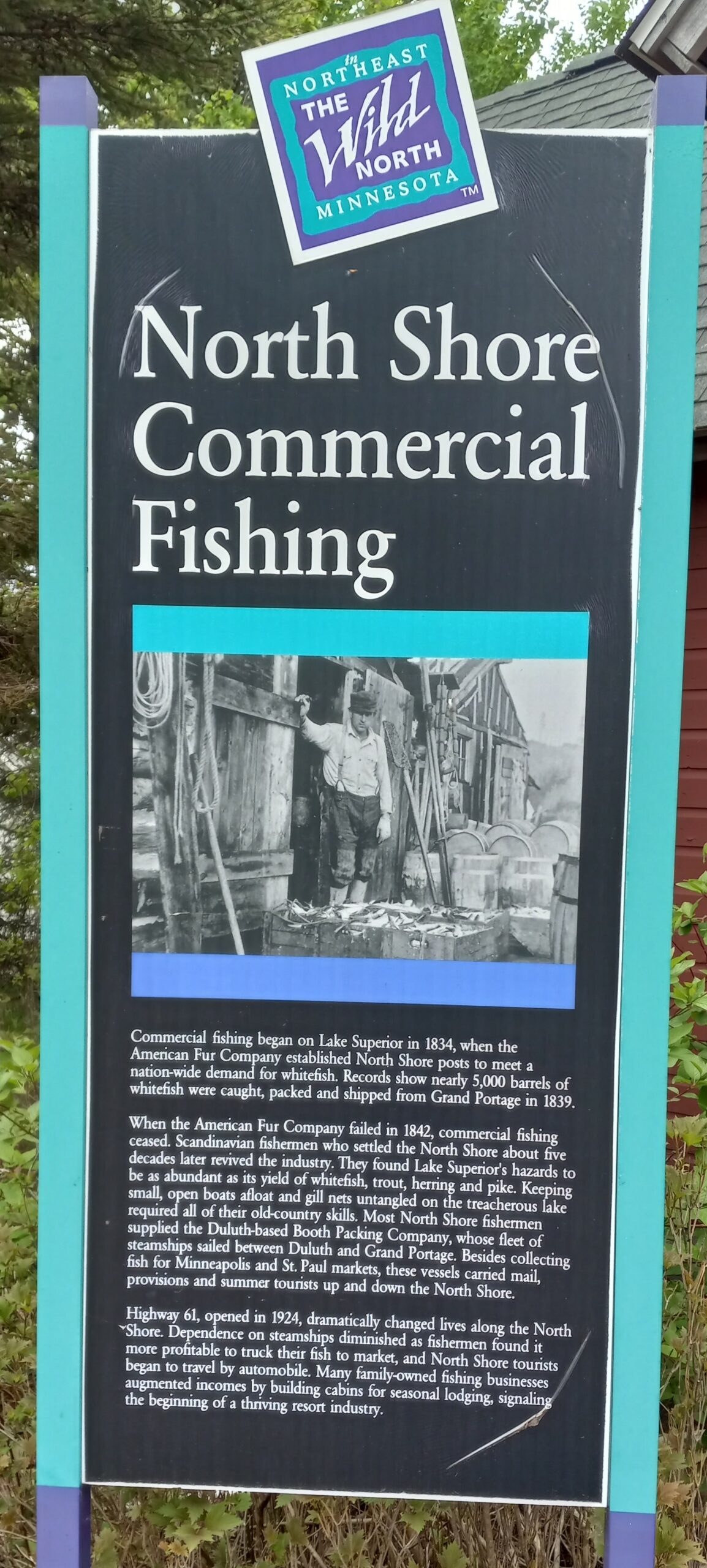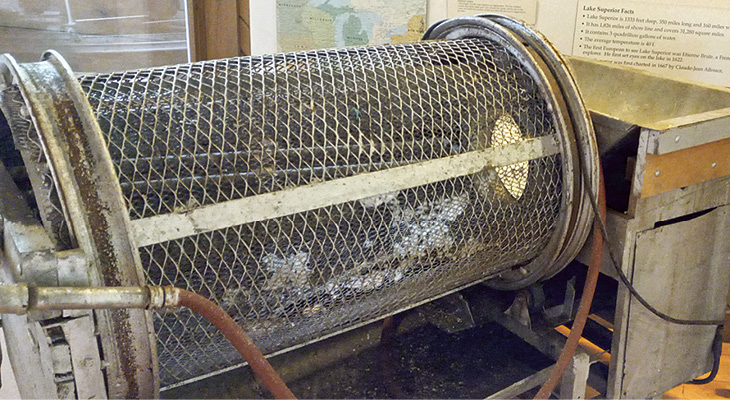Lake Superior is the largest of the Great Lakes, and in addition to making up the North Shore of Minnesota, it also borders Canada, Michigan, and Wisconsin. For centuries, commercial fishing has been a source of income for many families, while sustaining many communities along Lake Superior. The North Shore Commercial Fishing Museum in Tofte honors this rich history, from Duluth to Thunder Bay.
Owned and operated by the Tofte Historical Society, the museum has been educating visitors since 1996. The Historical Society was inspired by Tofte resident Dr. Ted Tofte’s passion for history, and recognizing the need to preserve it before it was too late. The organization also manages the town park, the end of the lake walk walking trail, and the Boat House Museum, all accessible from the Commercial Fishing Museum. Historical society board president, Ginny Storlie, says, “we offer a little indoor and a little outdoor glimpse into history.”
Storlie has been with the museum since the beginning and explains that North Shore communities are well into the second and third generation of families in the commercial fishing business. This results in more artifacts being donated to the museum each year, as family members grow older. “People continue to bring items while cleaning out grandma’s attic, and it is always interesting to go through,” says museum staff member Bill Wehseler. The generous donations add to the real-life stories of the fishing industry and allows for the museum exhibits to be rotated, continually providing a new experience for returning visitors.

The museum is a replica of the twin fish house that was originally located near where the present-day Bluefin Bay Restaurant stands. The one-room building chronicles all the aspects of maritime history and the commercial fishing industry, highlighting everything from important steamships to the evolution of the nets used. Fishing nets were first made of cotton and linen, but in the 1940s, those materials were replaced by the more durable nylon. The fish house was the center of the operation, as well as a vital social center. This is where fish were dressed, weighed, split and salted, and packed.
In most cases, a fish house was the first house of homesteaders, with work being done on the first floor and young families living on the second floor. A popular interactive display in the museum features photos and descriptions of over 100 fish houses that were once active along the shore. “Visitors enjoy paging through and discovering an ancestor’s story. It was a fascinating job putting it together,” says Storlie.
Margaret Carlsen is one of those folks with a deep North Shore fishing heritage. Her grandfather, Martin Lortenson, was the first Norwegian to settle in Beaver Bay in 1896. He made his living fishing the big lake until he drowned in 1911. In 2021, three generations of Carlsen fishermen delivered a large commercial fish scaler as a donation from the Carlsen operation. This one-of-a-kind machine was built by an inspector in the Department of Natural Resources. Herring were tumbled and sprayed on one end and came out the other end scale free. Visitors can turn the fish scaler and see the scales still coating the mesh. In addition to herring and lake trout, menominee, commonly called round whitefish, (a member of the salmon family), were also caught in abundance on Lake Superior.
Museum visitors can also view an in-depth video produced by PBS, titled “Steamship America: A North Shore Legend.” The SS America was a package freighter, built in 1898 by the Detroit Dry Dock Company to transport passengers, mail, and packages between settlements along the North Shore. The great steamship sank off the shore of Isle Royale in 1928, where the hull still remains. Copies of the documentary are available at the museum gift shop, along with other souvenirs to take home, including smoked and canned fish.
The Commercial Fishing Museum is open Sunday through Thursday, 9 a.m. to 3 p.m., and Friday and Saturday, 9 a.m. to 5 p.m., through October. Admission fees support the Tofte Historical Society. More information on the North Shore Commercial Fishing Museum can be found on Facebook, or visit: commercialfishingmuseum.org.




